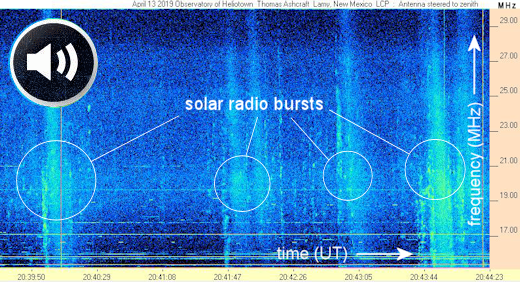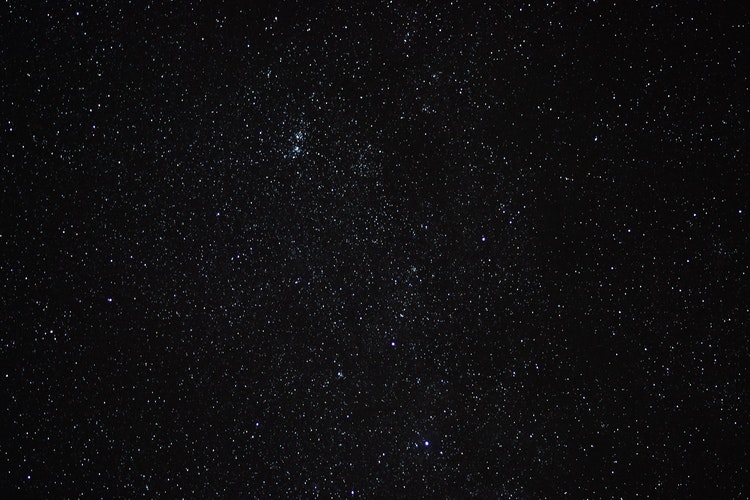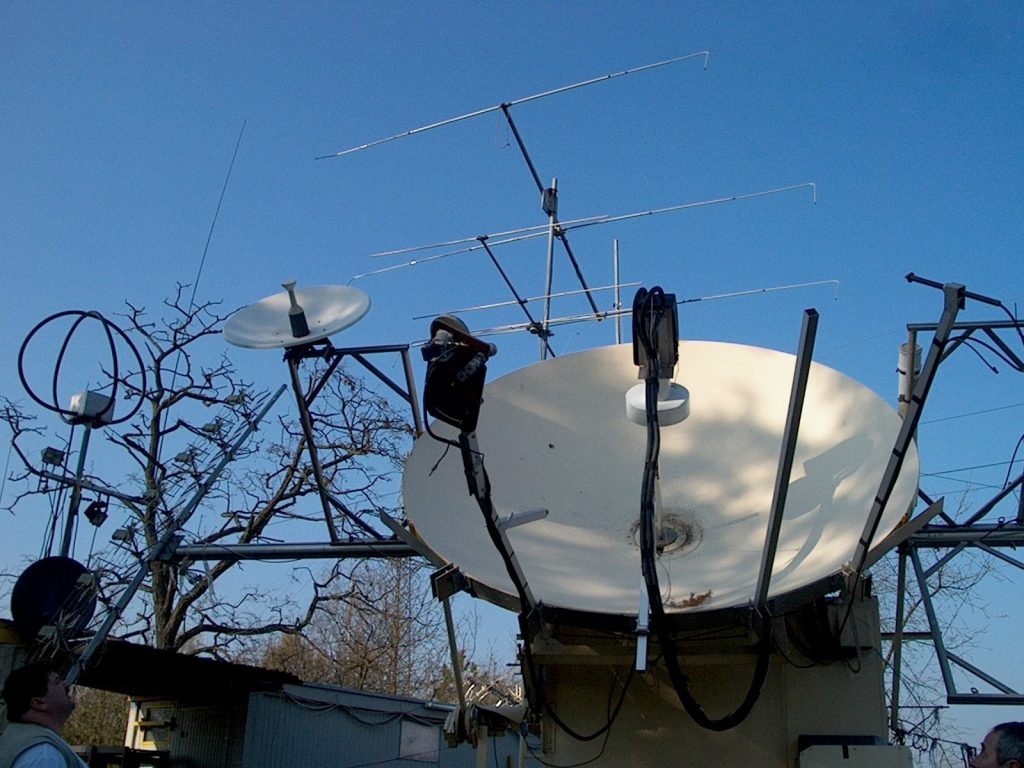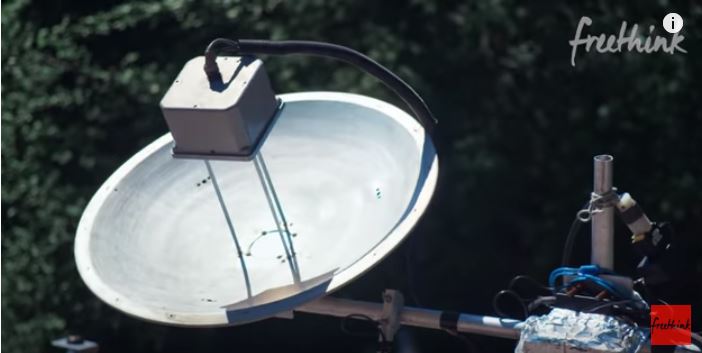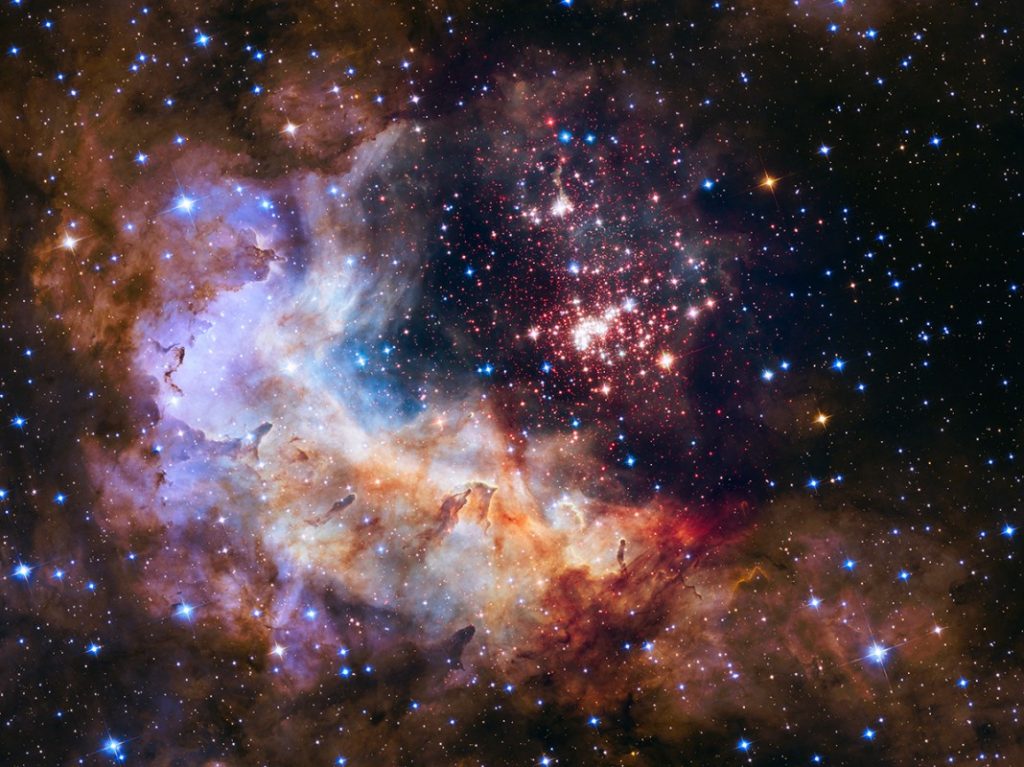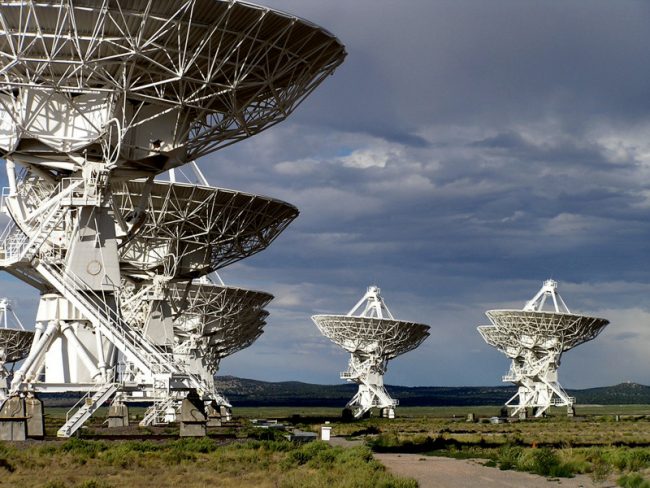
Image received by astronomer Cees Bassa (@cgbassa) using the Dwingeloo Telescoop
Many thanks to SWLing Post contributor, Eric McFadden (WD8RIF) who shares the following story from The Planetary Society:
Earlier this week, on October 10, radio amateurs all around the world worked together to get the Chinese Longjiang-2 spacecraft to take an image of the Earth and the far side of the Moon. Radio commands were generated by MingChuan Wei in China, transmitted to the spacecraft by Reinhard Kuehn in Germany after which they were received by the spacecraft in lunar orbit. In turn, the spacecraft transmitted the image back to Earth, where it was picked up by radio amateurs in Germany, Latvia, North America and the Netherlands.
Since June this year, the Chinese Longjiang-2 (also known as DSLWP-B) microsatellite has been orbiting the Moon. The satellite is aimed at studying radio emissions from stars and galaxies at very long wavelength radio waves (wavelengths of 1 to 30 meters). These radio waves are otherwise blocked by the Earth’s atmosphere, while the lunar environment offers protection from Earth-based and human-made radio interference. Longjiang-2 was launched to the Moon together with an identical twin, Longjiang-1 (DSLWP-A), together acting as a radio interferometer to detect and study the very long wavelength radio waves by flying in formation in lunar orbit.
Besides the scientific instruments, both Longjiang satellites carry a VHF/UHF amateur radio transmitter and receiver (a transceiver) built and operated by the Harbin Institute of Technology (in Chinese). The Longjiang-2 transceiver also includes an onboard student camera, nicknamed the Inory Eye. The Harbin team built on experience gained with the Earth-orbiting LilacSat-1 and LilacSat-2 nanosatellites, which allow radio amateurs to receive satellite telemetry, relay messages and command and download images taken with an onboard camera.
While receiving signals from satellites in low Earth orbit requires only relatively simple antennas, doing so for satellites in orbit around the Moon (a thousand times more distant), is much harder. To this end Longjiang-1 and 2 transmit signals in two low data-rate, error-resistant, modes; one using digital modulation (GMSK) at 250 bits per second, while the other mode (JT4G) switches between four closely spaced frequencies to send 4.375 symbols per second. This latter mode was developed by Nobel-prize winning astrophysicist Joe Taylor and is designed for radio amateurs to relay messages at very low signal strengths, typically when bouncing them off the surface of the Moon.
[M]any radio amateurs have been able to receive transmissions from Longjiang-2. Usually, the transceiver is powered on for 2-hour sessions at a time, during which GMSK telemetry is transmitted in 16-second bursts every 5 minutes. After some testing sessions in early June, the JT4G mode was activated, with 50 second transmissions every 10 minutes.
Specialized open source software written by MingChuan Wei and the Harbin team enables radio amateurs to decode telemetry as well as image data and upload it to the Harbin website.
The JT4G mode has allowed radio amateurs with small yagi antennas to detect signals from Longjiang-2 (using custom software written by Daniel Estévez).[…]
Click here to read the full article at The Planetary Society.
This is fascinating, Eric! Thank you for sharing. It would be amazing fun to grab one of these Lunar signals! Anyone up to the task?
